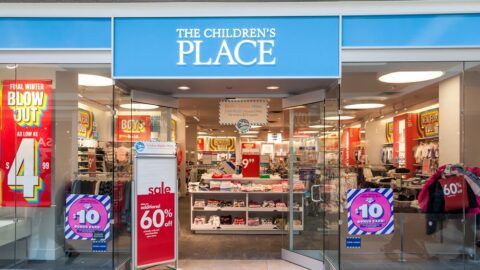While news of potential COVID vaccines has many retailers anticipating a return to in-store shopping in 2021, this year’s Q3 financial results show that consumers’ hunger for ecommerce shows no sign of being sated. Companies with strong online and omnichannel offerings were once again rewarded for their efforts, while those that have fallen behind in these areas continued to struggle — though their catch-up ecommerce efforts are starting to pay off.
Some of the key takeaways from the Q3 results include:
- Big box retailers such as Walmartand Target continued showcasing their omnichannel dominance with strong results, proving that their years of investment in leading-edge fulfillment strategies have paid off;
- Other retailers with strong omnichannel offerings in attractive categories, like Lowe’s and Home Depot in home improvement, leveraged them into impressive gains that will likely continue in future quarters; and
- Retailers with weak ecommerce operations, including The TJX Companies and Macy’s, have been upping their game, and while they aren’t yet in the black they are positioning themselves for an ecommerce-heavy future.
Long-Term Investments in Omnichannel and Supply Chains Pay Dividends at Big Box Retailers
Walmart was once again the barometer for retail success, with year-over-year total revenue growing 5.2% for the quarter. Unsurprisingly, ecommerce was the major driver: online sales were up 79%, while comparable sales growth was just 6.4%.
The retail giant is prepared to ride this momentum into Q4: Walmart has doubled its number of personal shoppers compared to holiday 2019 in preparation for the surge, with more than 157,000 associates ready to grab anything from groceries to gifts. This kind of future-proofing is nothing new for the company, and serves as one of its greatest advantages.
Advertisement
“Walmart had the foresight five years ago to be willing to absorb short-term pain for long-term gain, despite the equity market’s negative reaction,” said Charlie O’Shea, VP and Senior Credit Officer at Moody’s in an interview with Retail TouchPoints. “These investments in technology, online capability, including the acquisition of Jet.com, reconfiguring and refreshing stores to be able to handle in-store pickup, employee benefits to reduce turnover and price to continue to drive market share have paid off in spades.
“Leveraging the store base, which numbers over 5,400 in the U.S., to support its online business was proving effective prior to the surge in demand due to the pandemic, and the pandemic has illuminated how good it really is,” O’Shea continued. “In my almost 18 years covering the company here at Moody’s, I have never seen the company better positioned or performing better.”
Target, which has followed a similar path, reported digital comparable sales growth of 155% and a 9.9% comparable sales increase for the quarter. The retailer also reported a 217% uptick in same-day services (Order Pick Up, Drive Up and Shipt), with more than 95% of sales fulfilled by its stores — a sign that the retailer is ready to tackle the holiday season.
Omnichannel Builds on Consumer Interest in Home Improvement Category
Home improvement retailers have benefited from people staying home and working on domestic projects, and ecommerce has been an essential part of serving their needs. Home Depot’s Q3 same-store sales jumped 24.6% in Q3, with an 80% increase for digital sales alone, while Lowe’s saw a 30% increase overall and a 106% increase in ecommerce. Omnichannel was part of both retailers’ success:
- Home Depot reported that 60% of its online orders were picked up at stores; and
- While Lowes didn’t provide specific numbers, it noted that it has continued to invest in its omnichannel capabilities and expects them to pay off in coming quarters.
The need for a great omnichannel experience has only grown stronger over the past several months. The convenience of curbside pickup and other BOPIS offerings means ecommerce is likely to stay at elevated levels even after a vaccine becomes available, and retailers that have already refined their use of these now-core services are well-positioned to offer even more omnichannel convenience.
“In 2021, we’ll see more companies with adequate budgets invest in testing strategies in all of the places customers interact,” said Suzi Tripp, VP of Insights at Brooks Bell in commentary provided to Retail TouchPoints. “Insights from these tests will lead to better customer experiences that will separate the strong from the weak, as companies that fail to experiment with their customer experience strategy are sure to fall short.”
Pandemic Difficulty Means Struggling Retailers Will be Held Back Even Further
While resilient retailers continued performing well in Q3 2020, those that were already struggling with the pandemic found little reprieve. Macy’s 27% digital sales growth wasn’t enough to offset a 21% drop in comparable sales for the quarter. This was an improvement from the 34.7% comparable sales decline of Q2, when the company announced it would invest in fashion, digital and omnichannel capabilities, but the retailer’s ecommerce growth is still well below what better-positioned companies are experiencing. However, Macy’s CEO Jeff Gennette touted the retailer’s customer acquisition successes in a Nov. 19 earnings call, saying that the retailer added 7 million new shoppers in Q2 and Q3.
In comparison to losses at the department store retailer, the TJX Companies reported a milder 3.2% net sales decline and a 5% decrease in comparable store sales for the quarter. The Home Goods banner actually reported 15% comp-store sales growth, and TJX will capitalize on this growth by launching ecommerce on HomeGoods.com in 2021.
The difference between the two brands may be a matter of momentum. TJX entered the pandemic coming off strong 2019 results, with same-store sales up 4% for the year, while Macy’s reported a 0.8% comparable sales decline for the same period. This meant TJX was well-positioned to stand strong despite its lack of ecommerce experience, while Macy’s existing turnaround efforts were heavily impacted by the weight of the pandemic — a trend that will continue into the holiday season and beyond.
“Most of our highest-rated retailers had the benefit of being deemed essential, so there are obvious advantages,” said O’Shea. “However, even ahead of the pandemic, we were seeing the strong, higher-rated retailers really thriving at the expense of the weaker lower-rated [ones].
“Financial flexibility has been, and will continue to be, paramount, with the ability to spend definitely bearing fruit,” he added. “Being able to invest in stores, logistics, online, people and price has been the real differentiator over the past few years, with the gulf between the haves and have-nots widening even prior to the pandemic. The pandemic has accelerated these trends.”









